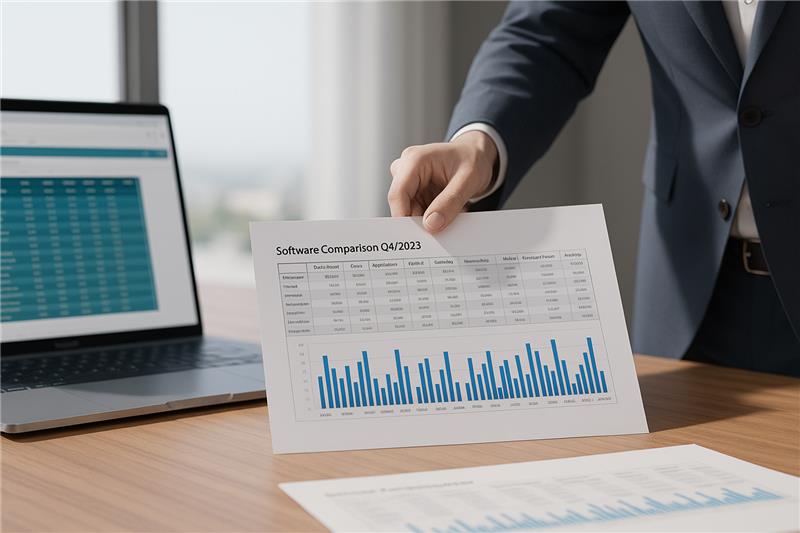
Common Mistakes Schools Make When Selecting SIS Software
November 6th 2025
In today's fast-evolving education technological landscape, educational institutions can no longer rely on outdated systems, which require manual labor and result in a failure to thrive, and they certainly aren't seeking to add yet more platforms with endless trainings and excessive expenses. A comprehensive cloud-based Student Information System (SIS) with ongoing updates is no longer just a convenience — but a must. It's the central hub for managing admissions, enrollment, billing, and reporting and a key component for achieving overall student success and institutional progress
EDUCAUSE research (2025) highlights that colleges and universities are prioritizing modern school management software and complete campus management systems, with an increasing focus on cloud-based SIS solutions to streamline operations, improve scalability, and enhance reporting capabilities. (EDUCASE 2025)
Here are the three biggest mistakes schools make when selecting an SIS — and how to avoid them
1. Neglecting to Create a Strong Business Case
Too often, decision-makers focus on price tags and feature lists without considering the long-term value of an innovative school management system that can automate manual processes. A comprehensive campus management software platform can eliminate the use of multiple separate tools for CRM/lead tracking, admissions, enrollment, billing, financial aid, transcript creation and reporting — saving both time and operational costs and increasing user satisfaction.
When your cloud-based SIS consolidates all the features needed to support your administrative processes, it reduces software licensing fees, IT maintenance, and training costs. A clear SIS business case ensures that decision-makers understand the long-term ROI of efficiency gains, cost savings, and better student outcomes - resulting in enrollment growth.
2. Failing to Make a True "Apples-to-Apples" Comparison
Not all student information systems are created equally.
In fact, it's often more of an apple to oranges scenario and the key is finding the solutions that best adapt to your processes and make your staff's jobs easier, simultaneously offering a better, more intuitive and user-friendly experience for your students and educators. Many institutions fall into the trap of comparing only high-level features without evaluating ease of use, integration capabilities, data accessibility, or scalability.
When comparing school management software or campus management software, create a checklist that includes:
- Ease of use, flexibility, and adaptability to YOUR processes
- Data migration and customization capabilities
- Integration capabilities with Single Sign On to 3rd party tools like LMS and Payment gateways
- Reporting and analytics depth
- Vendor responsiveness and support
- A full features list of what is included should be a part of every cost estimate
3. Assuming that Cheaper really does cost less
Budget matters, but the lowest upfront price doesn't always mean the best long-term investment. Lower-cost SIS options often come with trade-offs: limited features, minimal support, or poor scalability. Over time, these limitations can lead to added costs, inefficiencies, and frustration for staff and students alike. Focus on total value - not just initial sticker price.
What if we need to change workflows at mid-year or end of the year? What if we need to add extension fields? What if we add a new program or partner school that requires unique setup with its own application, course catalog, assessment or reporting requirements? Is it even possible to make those changes and if not, what will long term cost of missed opportunities for growth be? Will we have to pay our vendor for every small change to the system, or can we add fields, create forms, and even build reports through the interface? Will we potentially end up spending more in the long run than the slightly higher price of the other vendor?
The best choice for a SIS should include a team that supports your success long after implementation. The ideal vendors provide multi-tiered support, ongoing training and resources, regular system updates, and strategic account management to help you maximize system value year after year.
Bonus Tip: Choose a Partner, Not Just a Provider
The right SIS comes with a team that supports your success long after implementation. The best vendors provide multi-tiered support, ongoing training and resources, strategic account management, and regular system updates to help you maximize system value year after year.
Final Thoughts
Choosing the right Student Information System (SIS) can transform your institution — saving time, improving accuracy, and enhancing the student experience. Avoid these common mistakes, and you'll invest in a platform that grows with your organization.
Considering a new SIS? Discover how Maestro SIS helps institutions streamline admissions, enrollment, student billing, and reporting — all within one unified, cloud-based platform. Learn more about Maestro SIS
Download a flyer of Maestro SIS Benefits

Do you want to Contact Us?
954-453-9705
2900 Glades Circle Suite 500
Weston, FL 33327